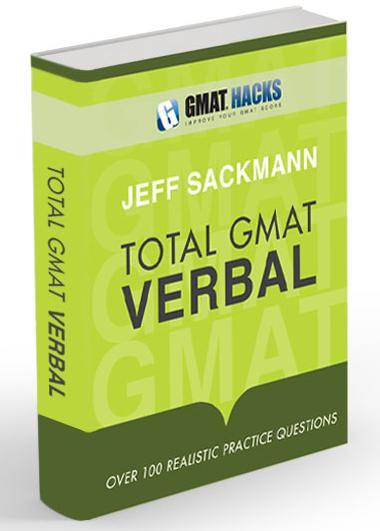
Bookshelf
|
|
Total GMAT Math Jeff's complete Quant guide, on sale now! |
|
|
Total GMAT Verbal Everything you need to ace GMAT Verbal! |
1,800 Practice Math Questions
Buy Jeff's books at Amazon.com

GMAT Official Guide, with IR
OG Math | OG Verbal
OG12 & Quant Rev solutions!
GMAT Question of the Day
Beginner's Guide to the GMAT
GMAT Hacks Affiliate Program

Recent Hacks

Categories
- General Study Tips
- Goals and Planning
- CAT Strategy
- The Mental Game
- GMAT Math Strategy
- GMAT Math Topics
- Mental Math
- Data Sufficiency
- Critical Reasoning
- Reading Comprehension
- Sentence Correction
- Analytical Writing Assessment
- Integrated Reasoning
- IR Explained
- Business School Admissions
- GMAT Prep Resources
- Practice Questions
- Total GMAT Math
- Total GMAT Verbal
- GMAT 111

GMAT Integrated Reasoning: Table Analysis
March 15, 2012
| You should follow me on Twitter. While you're at it, take a moment to subscribe to GMAT Hacks via RSS or Email. |
In its new Integrated Reasoning section, the GMAT really wants to determine whether you can work with tabular data. Nowhere is this more clear than in the format of "Table Analysis."
Table Analysis brings together two skills: parsing tabular data, and making logical deductions. The latter should be familiar--it's what underlies almost all of Critical Reasoning, as well as a fair amount of Reading Comprehension. Dealing with tables, while it does appear on a Quant question here and there, has never been a top priority of the GMAT.
Now it is. Table Analysis questions take advantage of the computer-based nature of the GMAT. These aren't just tables, they are sortable spreadsheets. The GMAC has made available a few sample questions, which you can try here. (There will be more practice material available next month with the release of the 13th edition of the GMAT Official Guide.)
As I've noted, the deductions you are expected to make are very similar to those in Critical Reasoning. In fact, you may find them to be easier. The challenge here is facing a new set of data and understanding how all the pieces fit together.
Like the other question types on the new Integrated Reasoning section, Table Analysis is intended to gauge your skills in more "real-world" scenarios. Odds are, you've dealt with plenty of spreadsheets in your life, so you are accustomed to making decisions based on this sort of data. The challenge, then, is like that of Reading Comprehension. You may be familiar with the format, but the content (market share of soybeans, the percentage of Russians who visit museums, etc) is probably unfamiliar.
When more practice material is released, I'll have more to say about how to attack these new question types. In the meantime, think a little more logically about what your spreadsheets are saying to you--it just might boost your GMAT score.
About the author: Jeff Sackmann has written many GMAT preparation books, including the popular Total GMAT Math, Total GMAT Verbal, and GMAT 111. He has also created explanations for problems in The Official Guide, as well as 1,800 practice GMAT math questions.
 |
Total GMAT Verbal
The comprehensive guide to the GMAT Verbal section. Recognize, dissect, and master every question type
you'll face on the test. Everything you need, all in one place, including 100+ realistic practice questions. |